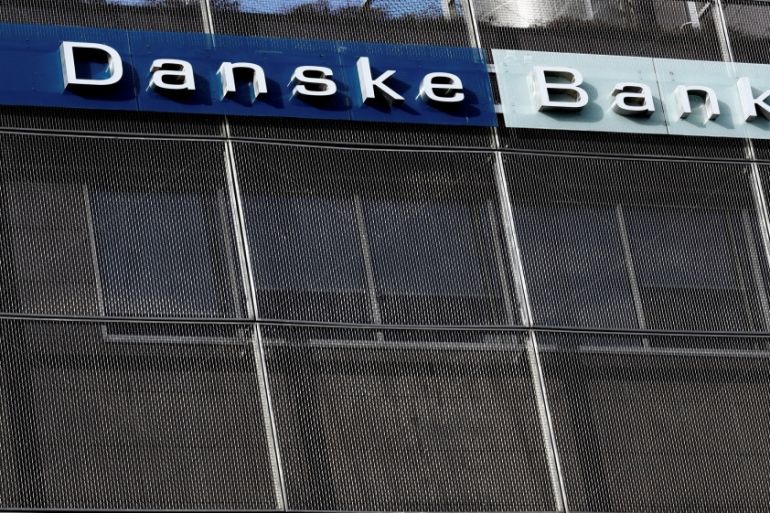Danske Bank exec at centre of money-laundering scandal found dead
The 2007-2015 money-laundering scheme – the largest ever uncovered in Europe – centred on Danske Bank’s Estonian branch.

Estonian police have found the body of the former head of Danske Bank in Estonia who was at the centre of a $220bn money-laundering scandal and had disappeared two days ago.
Police said Aivar Rehe went missing on Monday, fuelling speculation that the disappearance might be related to the 2007-2015 money-laundering scheme – the largest ever uncovered in Europe.
Keep reading
list of 4 itemsTop US Senator Bob Menendez’s corruption trial begins
A year since Pakistan’s May 9 riots: A timeline of political upheaval
Fiji’s former Prime Minister Frank Bainimarama jailed for a year
Rehe was found after a search involving dogs, drones and volunteers near his home in the Estonian capital, Tallinn.
Police said no third parties were suspected in the disappearance and suggested the possibility of a suicide. No other details were made available.
Rehe, who was head of Danske Bank in Estonia from 2006 to 2015, said in March that he felt responsible but also believed Danske Bank’s anti-money laundering mechanisms at that time were sufficient.
He was not considered a suspect in any of the ongoing investigations into the bank.
What happened at Danske Bank?
Danske Bank is under investigation on both sides of the Atlantic for allegedly funnelling billions of dollars in illicit wealth through its Estonian branch, which it acquired in 2006.
From then until 2015, some 200 billion euros ($220bn) in suspicious transactions passed through the branch.
The massive sum – 10 times Estonia’s gross domestic product – was paid in by non-residents, with most of the deposits coming from Russia.
The story broke in March 2017, after the Estonian branch was mentioned by Danish newspaper Berlingske in connection with the Russia and Azerbaijani Laundromat money-laundering operations.
Initially, the sum allegedly laundered was thought to amount to around two billion dollars, however, following investigations by Denmark’s Financial Supervisory Authority (FSA) and Danske Bank itself, the figure was discovered to be $220bn.
How did it happen?
Warnings from authorities in Estonia and Russia as early as 2007 about suspicious activities in the Estonian branch were apparently ignored, while internal mismanagement allowed the branch to effectively operate under a different set of standards to others in the Danske Bank group.
The Danish press also reported that a whistleblower inside the bank alerted management to the trouble in the Estonian branch around 2012, but this was also apparently ignored.
“Not only did Danske Bank not look carefully enough at this, they were actually aware that there were a lot of suspicious transactions, but they consciously and deliberately chose to look the other way because it was very profitable to manage these types of transactions,” Jacob Kirkegaard, a senior fellow at Washington, DC-based Peterson Institute for International Economics, told Al Jazeera last year.
What now?
The bank – which holds a third of Danish people’s savings – was hit hard by the scandal, losing almost 50 percent of its market value and facing investigations in the United States, Estonia and Denmark.
While financial loses to the bank are likely to be minimal in the long term, analysts say rebuilding its credibility could take years.
Earlier this year, the bank was ordered to leave Estonia and several of its former executives in Denmark have had preliminary criminal charges brought against them.
The suspicious transactions, meanwhile, have so far been linked to clients in Russia, and several former Soviet republics, including Ukraine, Azerbaijan and Moldova.
Among those implicated are a number of Russian oligarchs, including members of President Vladimir Putin ‘s inner circle, and several shell companies registered in the UK or its overseas territories.
From Estonia, much of the money was invested in London and in tax havens, such as the Cayman Islands. Its ultimate destination, however, remains largely unknown.